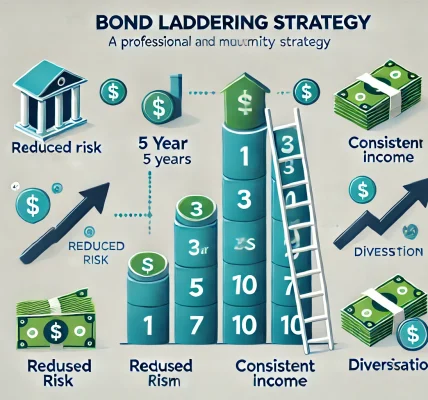Bond refinancing is a common financial strategy used by companies to improve their debt structure and reduce costs. This process involves issuing new bonds to pay off existing ones, often to take advantage of lower interest rates or more favorable terms. Understanding the motives and timing behind bond refinancing can provide valuable insights into a company’s financial health and strategic planning.
In this comprehensive guide, we will explore what bond refinancing is, why companies engage in it, when it is most beneficial, and the potential risks and rewards associated with this financial maneuver.
What Is Bond Refinancing?
Bond refinancing refers to the process of a company issuing new bonds to repay and replace its existing bonds. It is similar to refinancing a mortgage, where the primary goal is to secure better terms or reduce interest payments.
Key Concepts in Bond Refinancing:
- Callable Bonds: Bonds that can be repaid before their maturity date, allowing companies to refinance when conditions are favorable.
- Interest Rate Environment: The prevailing market interest rates play a significant role in a company’s decision to refinance.
- Debt Management: Refinancing helps companies optimize their capital structure and manage debt more effectively.
Why Do Companies Refinance Bonds?
There are several strategic reasons why companies choose to refinance their bonds. Here are the primary motivations:
1. Lowering Interest Costs
- Objective: To reduce the cost of borrowing by issuing new bonds at lower interest rates.
- Benefit: Decreases the company’s overall interest expense, improving profitability and cash flow.
2. Extending Maturity Dates
- Objective: To push repayment obligations further into the future.
- Benefit: Provides financial flexibility and reduces the risk of liquidity crises.
3. Improving Credit Ratings
- Objective: To strengthen financial metrics by reducing leverage and enhancing the company’s balance sheet.
- Benefit: Higher credit ratings often lead to lower borrowing costs and increased investor confidence.
4. Accessing More Favorable Terms
- Objective: To secure better covenants, payment schedules, or other contractual benefits.
- Benefit: Allows for improved financial planning and fewer operational restrictions.
5. Taking Advantage of Market Conditions
- Objective: To capitalize on favorable market conditions, such as low interest rates.
- Benefit: Enables the company to lock in advantageous rates before market conditions change.
When Do Companies Refinance Bonds?
Timing is crucial in bond refinancing. Companies usually refinance when conditions are optimal to maximize the benefits and minimize costs.
1. Falling Interest Rates
- Reason: When market interest rates drop significantly below the coupon rate on existing bonds.
- Example: If a company has bonds issued at 8% interest and market rates fall to 5%, refinancing can generate substantial savings.
2. Approaching Call Dates
- Reason: When a bond’s call date approaches, companies can redeem and refinance bonds without incurring heavy penalties.
- Example: Callable bonds with a 5-year call option allow companies to refinance early if rates improve.
3. Credit Rating Upgrades
- Reason: Improved creditworthiness enables access to lower-cost financing.
- Example: A company moving from a “BBB” to an “A” credit rating may secure better refinancing terms.
4. Economic Conditions
- Reason: Economic downturns or expansions influence bond yields and refinancing decisions.
- Example: In times of low inflation and central bank easing, companies may pursue refinancing to lock in lower rates.
The Process of Bond Refinancing
Bond refinancing typically involves several structured steps to ensure a successful transaction.
- Evaluating Market Conditions: Assessing the current interest rate environment and economic climate.
- Cost-Benefit Analysis: Calculating the savings from refinancing versus the costs (e.g., call premiums, legal fees).
- Structuring the New Bond Issuance: Designing new bonds with terms that align with strategic goals.
- Redeeming Old Bonds: Using the proceeds from new bond sales to retire the existing obligations.
- Regulatory Compliance: Ensuring adherence to securities regulations and investor disclosures.
Risks and Challenges in Bond Refinancing
While bond refinancing offers numerous advantages, it also presents potential risks that companies must carefully manage.
1. Prepayment Penalties
- Risk: Callable bonds often include call premiums that increase refinancing costs.
- Mitigation: Timing the refinancing around call dates reduces penalty exposure.
2. Market Volatility
- Risk: Sudden interest rate increases can disrupt refinancing plans.
- Mitigation: Monitoring economic indicators and acting swiftly can mitigate volatility risks.
3. Credit Downgrade Risk
- Risk: Refinancing without proper financial controls can weaken credit ratings.
- Mitigation: Maintain robust financial health and clear communication with rating agencies.
4. Legal and Regulatory Compliance
- Risk: Failure to comply with legal standards can result in litigation or penalties.
- Mitigation: Engage legal experts to ensure adherence to regulations and fair disclosure.
Real-World Examples of Bond Refinancing
1. Apple Inc.’s Refinancing Strategy
In 2020, Apple issued $8.5 billion in new bonds at record-low interest rates to refinance existing debt. This move saved millions in interest expenses while extending the maturity profile.
2. Ford Motor Company’s Debt Restructuring
Amid credit concerns, Ford successfully refinanced billions in bonds, enhancing liquidity and ensuring long-term financial flexibility.
Legal Considerations in Bond Refinancing
To avoid legal pitfalls, companies must observe strict compliance standards during bond refinancing:
- Disclosure Requirements: Provide clear and accurate information to investors.
- Securities Regulations: Follow applicable laws set by regulatory bodies (e.g., SEC regulations in the U.S.).
- Contractual Obligations: Respect existing bond covenants to prevent legal disputes.
Disclaimer: This content is for educational purposes only and does not constitute legal or financial advice. Consult a professional advisor for specific guidance.
Conclusion: Strategic Use of Bond Refinancing
Bond refinancing is a powerful tool for companies seeking to optimize their debt profiles, reduce costs, and maintain financial flexibility. By carefully evaluating market conditions, performing cost-benefit analyses, and managing risks, businesses can leverage refinancing to enhance their financial standing.
Understanding the motivations, processes, and challenges of bond refinancing equips investors and stakeholders with the knowledge to assess corporate financial strategies effectively. With a disciplined approach and legal compliance, companies can use bond refinancing as a strategic lever for sustainable growth and operational success.



